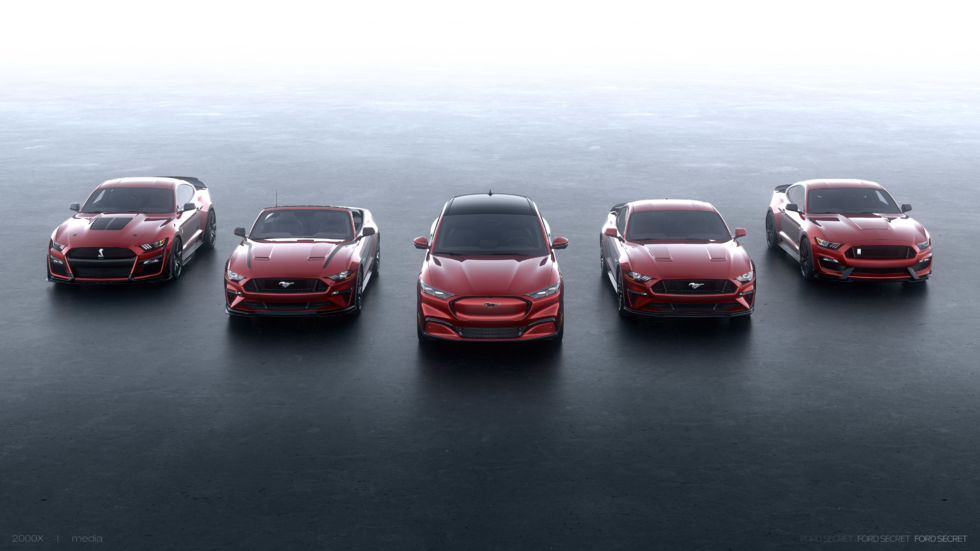Ford unveiled Sunday ahead of the LA Auto Show the Mustang Mach-E, the highly anticipated all-electric crossover and the first vehicle to come out of Team Edison, the automaker’s dedicated electric vehicle organization.
In short: the Mustang Mach-E is different from any other Ford vehicle without ignoring its roots. It’s undeniably a Mustang with its short nose and front overhang, headlights and muscular stance. But it also has a design suited for an electric vehicle as well as an all-new infotainment system and connected vehicle technology, plus a few other interesting and new details.
The moment is an important one for Ford, which has historically backed hybrid technology. It not only represents the biggest change for the Mustang in its 55 year history, it’s the first product to come out of Ford’s $11 billion commitment to add 16 all-electric vehicles within its global portfolio of 40 electrified vehicles through 2022.
“We knew we had to do something different and something exciting and something only Ford could do,” Kumar Galhotra, president of Ford North America said at a press event prior to the Sunday unveiling.
This is not meant to be a compliance car — the types of vehicles produced only to meet stricter emissions rules in some states such as California, a key market for automakers. It’s meant to be a vehicle that people get excited about; it must be fun to drive and have the performance that Mustang diehards expect. It’s no small task and one some within the company viewed as a risk.
“I’ve driven it and it’s a rocket ship,” Ford Chairman Bill Ford said during the event Sunday. “This is a Mustang for a new generation, but I also think long-time Mustang fans like me will love it as well.”
And while there have been months of teasers and even one big leak, the unveiling Sunday provided fresh details of the vehicle.
Ford will offer five variants of the Mustang Mach-E, including a standard version called Select, a Premium trim, First Edition, California Route 1 and a GT Performance edition that is targeting a 0 to 60 miles per hour acceleration in the mid 3-second range and an estimated 342 kW (459 horsepower) and 830 Nm (612 pound-feet) of torque.
Starting at $43,895
The most affordable version of the Mach-E will be the “Select” trim with rear-wheel drive that starts at $43,895. However, “select” won’t be available until early 2021. The select rear-wheel view trim has 75.7 kwh battery with a target range of 230 miles. For another $2,700, the select trim is also available in all-wheel drive.
The limited First Edition will start at $59,900 and be available in extended-range all-wheel drive, with red painted brake calipers, metallic pedal covers, contrasting seat stitching and a scuff plate marked “First Edition.” The First Edition, , which is targeting 0-60 in the mid five-second range, has a 98.8 kwh battery that can travel 270 miles on a single charge.
The first edition and the premium trims will be the initial Mustang Mach-E vehicles available in fall 2020. The Premium version will start at $50,600.
The GT performance, which starts at $60,500, will be available in Spring 2021. The GT performance comes with a 98.8 kwh battery pack with targeted EPA estimate of 250 miles.
Ford has opened up a reservations page, where customers can put a $500 deposit down for any of the versions. A configurator that allows customers to design the version is also live.


